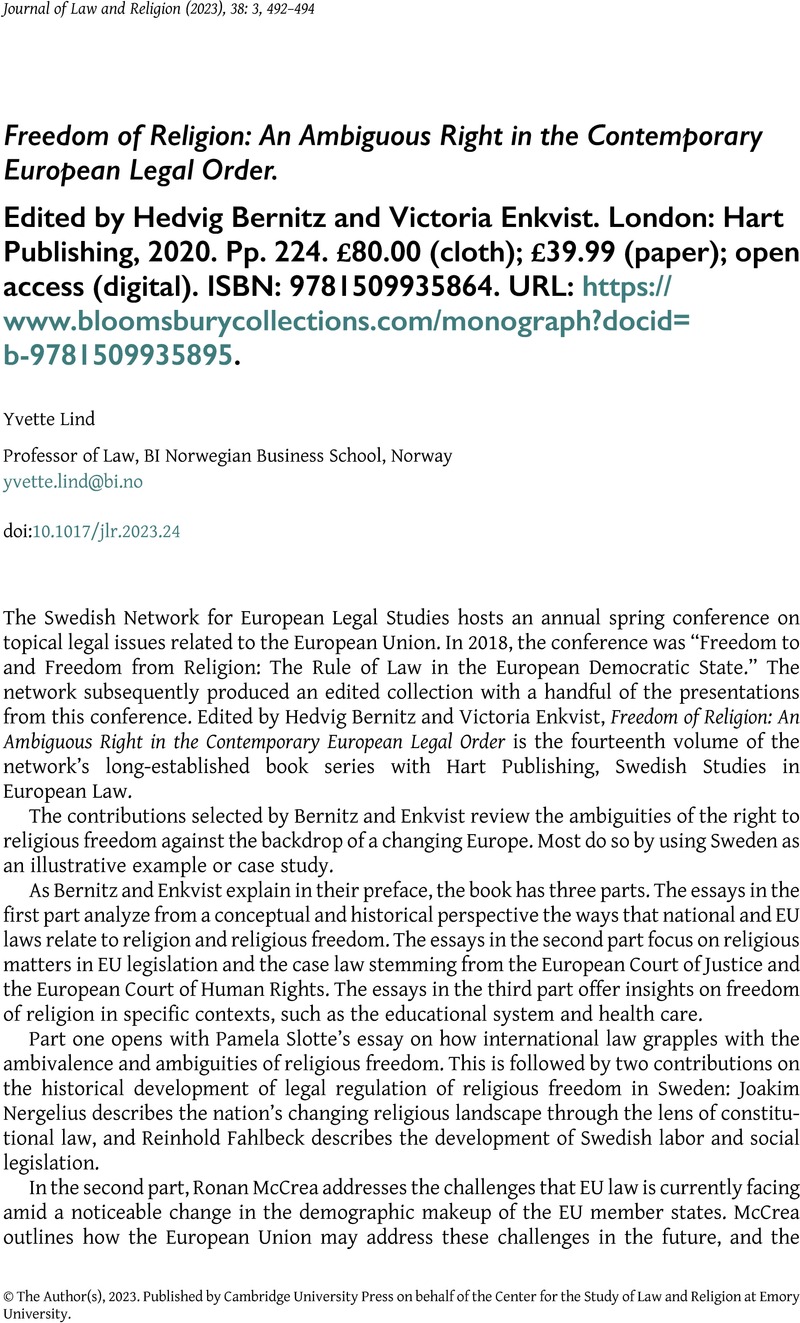No CrossRef data available.
Published online by Cambridge University Press: 08 September 2023

1 Patrick Nash, review of Freedom of Religion: An Ambiguous Right in the Contemporary European Legal Order, edited by Hedvig Bernitz and Victoria Enkvist, Ecclesiastical Law Journal 23, no. 2 (2021): 238–240, at 240.